A panoramic view of the virosphere in three wastewater treatment plants by integrating viral-like particle-concentrated and traditional non-concentrated metagenomic approaches
- PMID: 38898980
- PMCID: PMC11183165
- DOI: 10.1002/imt2.188
A panoramic view of the virosphere in three wastewater treatment plants by integrating viral-like particle-concentrated and traditional non-concentrated metagenomic approaches
Abstract
Wastewater biotreatment systems harbor a rich diversity of microorganisms, and the effectiveness of biotreatment systems largely depends on the activity of these microorganisms. Specifically, viruses play a crucial role in altering microbial behavior and metabolic processes throughout their infection phases, an aspect that has recently attracted considerable interest. Two metagenomic approaches, viral-like particle-concentrated (VPC, representing free viral-like particles) and non-concentrated (NC, representing the cellular fraction), were employed to assess their efficacy in revealing virome characteristics, including taxonomy, diversity, host interactions, lifestyle, dynamics, and functional genes across processing units of three wastewater treatment plants (WWTPs). Our findings indicate that each approach offers unique insights into the viral community and functional composition. Their combined use proved effective in elucidating WWTP viromes. We identified nearly 50,000 viral contigs, with Cressdnaviricota and Uroviricota being the predominant phyla in the VPC and NC fractions, respectively. Notably, two pathogenic viral families, Asfarviridae and Adenoviridae, were commonly found in these WWTPs. We also observed significant differences in the viromes of WWTPs processing different types of wastewater. Additionally, various phage-derived auxiliary metabolic genes (AMGs) were active at the RNA level, contributing to the metabolism of the microbial community, particularly in carbon, sulfur, and phosphorus cycling. Moreover, we identified 29 virus-carried antibiotic resistance genes (ARGs) with potential for host transfer, highlighting the role of viruses in spreading ARGs in the environment. Overall, this study provides a detailed and integrated view of the virosphere in three WWTPs through the application of VPC and NC metagenomic approaches. Our findings enhance the understanding of viral communities, offering valuable insights for optimizing the operation and regulation of wastewater treatment systems.
Keywords: antibiotic resistance gene; auxiliary metabolic gene; metagenome; virome; virus; wastewater treatment system.
© 2024 The Authors. iMeta published by John Wiley & Sons Australia, Ltd on behalf of iMeta Science.
Conflict of interest statement
The authors declare no conflict of interest.
Figures
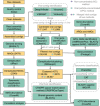
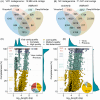

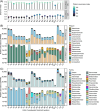
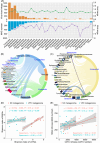

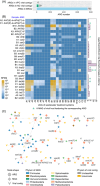
Similar articles
-
A Metagenomic Investigation of Potential Health Risks and Element Cycling Functions of Bacteria and Viruses in Wastewater Treatment Plants.Viruses. 2024 Mar 29;16(4):535. doi: 10.3390/v16040535. Viruses. 2024. PMID: 38675877 Free PMC article.
-
Metagenomics Reveals the Impact of Wastewater Treatment Plants on the Dispersal of Microorganisms and Genes in Aquatic Sediments.Appl Environ Microbiol. 2018 Feb 14;84(5):e02168-17. doi: 10.1128/AEM.02168-17. Print 2018 Mar 1. Appl Environ Microbiol. 2018. PMID: 29269503 Free PMC article.
-
Global diversity and biogeography of DNA viral communities in activated sludge systems.Microbiome. 2023 Oct 21;11(1):234. doi: 10.1186/s40168-023-01672-1. Microbiome. 2023. PMID: 37865788 Free PMC article.
-
Antibiotic resistant bacteria and genes in wastewater treatment plants: From occurrence to treatment strategies.Sci Total Environ. 2022 Sep 10;838(Pt 4):156544. doi: 10.1016/j.scitotenv.2022.156544. Epub 2022 Jun 6. Sci Total Environ. 2022. PMID: 35679932 Review.
-
Monitoring antibiotic resistance genes in wastewater treatment: Current strategies and future challenges.Sci Total Environ. 2021 Aug 20;783:146964. doi: 10.1016/j.scitotenv.2021.146964. Epub 2021 Apr 7. Sci Total Environ. 2021. PMID: 33866168 Review.
Cited by
-
Wastewater Metavirome Diversity: Exploring Replicate Inconsistencies and Bioinformatic Tool Disparities.Int J Environ Res Public Health. 2025 Apr 30;22(5):707. doi: 10.3390/ijerph22050707. Int J Environ Res Public Health. 2025. PMID: 40427823 Free PMC article.
-
Characteristics of Soil Microbial Community Structure in Different Land Use Types of the Huanghe Alluvial Plain.Microorganisms. 2025 Jan 25;13(2):273. doi: 10.3390/microorganisms13020273. Microorganisms. 2025. PMID: 40005640 Free PMC article.
-
Phages-bacteria interactions underlying the dynamics of polyhydroxyalkanoate-producing mixed microbial cultures via meta-omics study.mSystems. 2025 Apr 22;10(4):e0020025. doi: 10.1128/msystems.00200-25. Epub 2025 Mar 28. mSystems. 2025. PMID: 40152616 Free PMC article.
-
Biases and complementarity in gut viromes obtained from bulk and virus-like particle-enriched metagenomic sequencing.Microbiol Spectr. 2025 Aug 5;13(8):e0001325. doi: 10.1128/spectrum.00013-25. Epub 2025 Jul 2. Microbiol Spectr. 2025. PMID: 40600714 Free PMC article.
-
Advances in Wastewater-Based Epidemiology for Pandemic Surveillance: Methodological Frameworks and Future Perspectives.Microorganisms. 2025 May 21;13(5):1169. doi: 10.3390/microorganisms13051169. Microorganisms. 2025. PMID: 40431340 Free PMC article. Review.
References
-
- Bengtsson‐Palme, Johan , Milakovic Milena, Švecová Helena, Ganjto Marin, Jonsson Viktor, Grabic Roman, and Udikovic‐Kolic Nikolina. 2019. “Industrial Wastewater Treatment Plant Enriches Antibiotic Resistance Genes and Alters the Structure of Microbial Communities.” Water Research 162: 437–445. 10.1016/j.watres.2019.06.073 - DOI - PubMed
LinkOut - more resources
Full Text Sources
